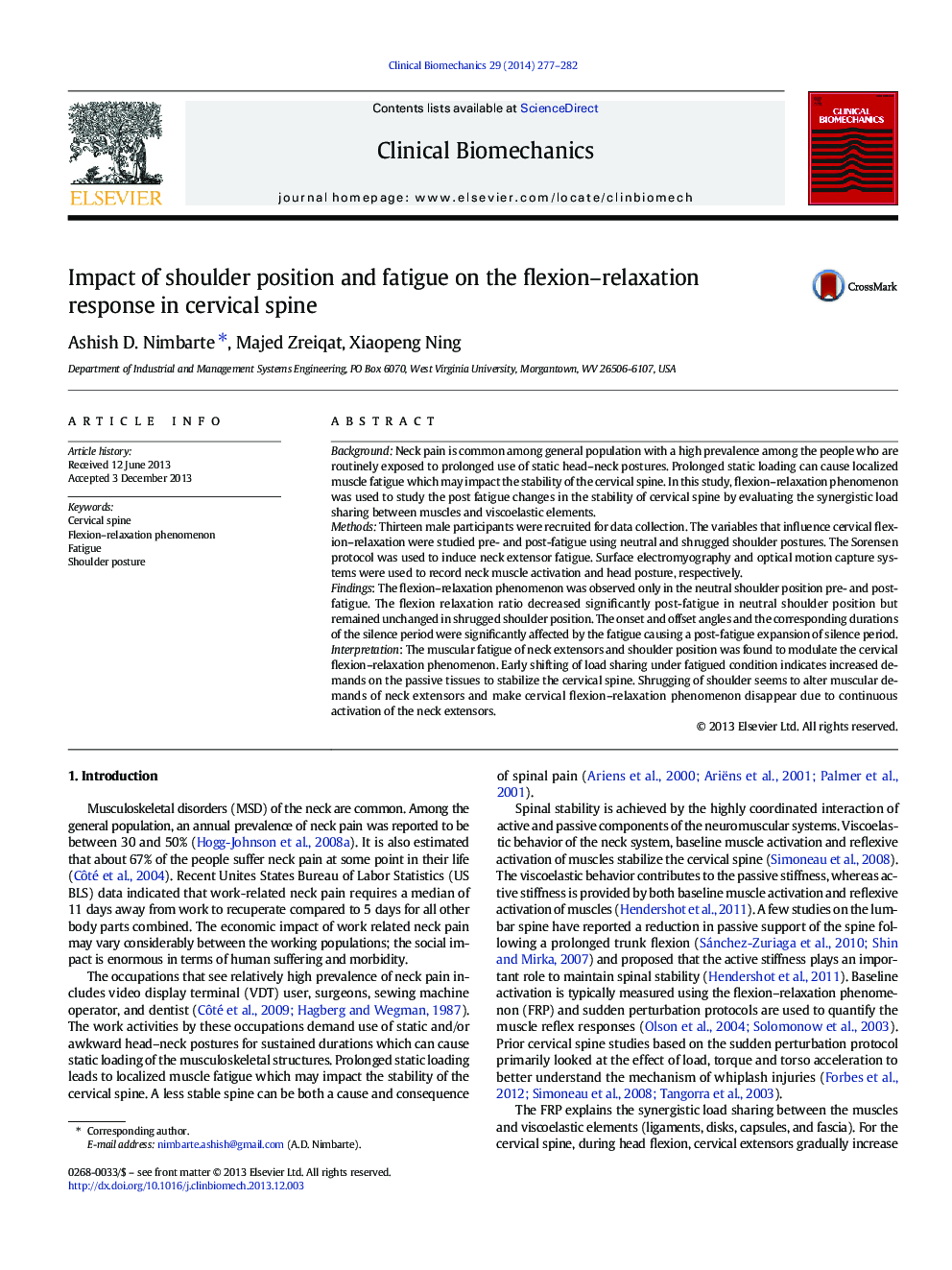| Article ID | Journal | Published Year | Pages | File Type |
|---|---|---|---|---|
| 4050280 | Clinical Biomechanics | 2014 | 6 Pages |
BackgroundNeck pain is common among general population with a high prevalence among the people who are routinely exposed to prolonged use of static head–neck postures. Prolonged static loading can cause localized muscle fatigue which may impact the stability of the cervical spine. In this study, flexion–relaxation phenomenon was used to study the post fatigue changes in the stability of cervical spine by evaluating the synergistic load sharing between muscles and viscoelastic elements.MethodsThirteen male participants were recruited for data collection. The variables that influence cervical flexion–relaxation were studied pre- and post-fatigue using neutral and shrugged shoulder postures. The Sorensen protocol was used to induce neck extensor fatigue. Surface electromyography and optical motion capture systems were used to record neck muscle activation and head posture, respectively.FindingsThe flexion–relaxation phenomenon was observed only in the neutral shoulder position pre- and post-fatigue. The flexion relaxation ratio decreased significantly post-fatigue in neutral shoulder position but remained unchanged in shrugged shoulder position. The onset and offset angles and the corresponding durations of the silence period were significantly affected by the fatigue causing a post-fatigue expansion of silence period.InterpretationThe muscular fatigue of neck extensors and shoulder position was found to modulate the cervical flexion–relaxation phenomenon. Early shifting of load sharing under fatigued condition indicates increased demands on the passive tissues to stabilize the cervical spine. Shrugging of shoulder seems to alter muscular demands of neck extensors and make cervical flexion–relaxation phenomenon disappear due to continuous activation of the neck extensors.
